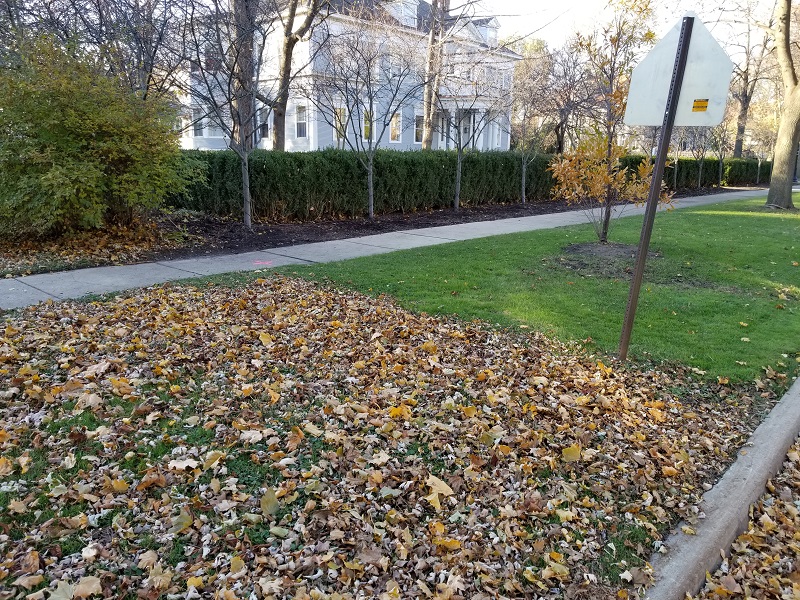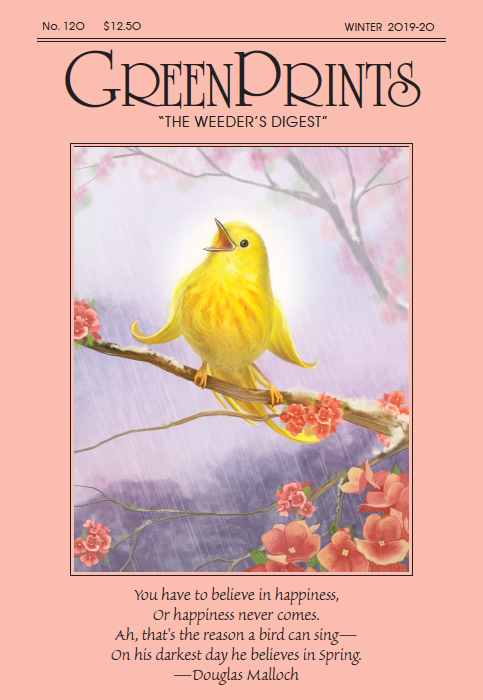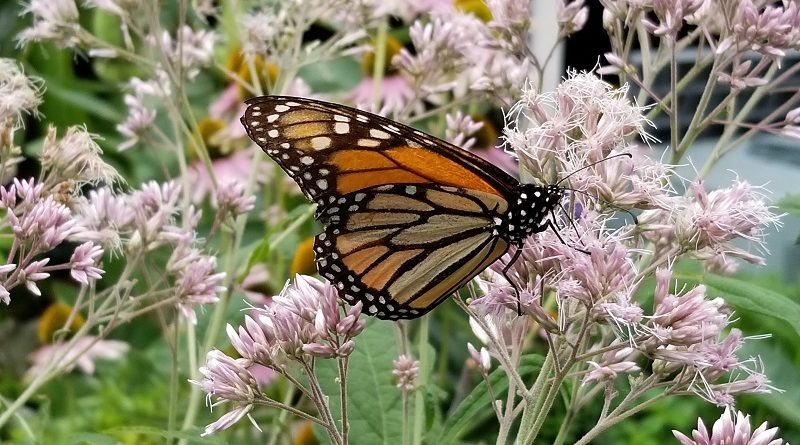Preventing Monarch Butterfly Roadkill
Podcast: Play in new window | Download (Duration: 1:34:44 — 43.4MB)
Subscribe: Apple Podcasts | Spotify | Android | iHeartRadio | Podchaser | Email | TuneIn | RSS | More
(November 10, 2019) Before we look at preventing monarch butterfly roadkill, let’s first look at the bigger picture. Those of us who drive know what it’s like to have an insect splatter on the windshield. Or at least we used to. In the last few years, something called the windshield phenomenon has caught the attention of scientists and naturalists. That notion posits that the world has lost vast numbers of insects in the past several decades. Many folks became alarmed when the New York Times published a piece in 2018 headlined, The Insect Apocalypse Is Here.
Is it? Maybe not.
On the same day that Guy McPherson appeared on our show to talk about Near Term Human Extinction, I wrote about a story published by Undark. They were critical of the science and media’s coverage of the science surrounding “insectageddon.”
The story the media often misses is far more complex — and in some ways more dire — than the sensationalist fodder they frequently prefer to peddle. While the studies behind the Insectageddon story don’t provide evidence that all six-legged life on Earth is doomed, Saunders said, they do provide a window on how humans can impact biodiversity more generally.
A story in The Atlantic offers a similar perspective.
Which brings us to the monarch butterfly. We have covered the plight of Danaus plexippus on many shows. We have watch the numbers drop precipitously and then bounce back. Is this iconic species still in danger? We probably won’t know for awhile.
But efforts are ongoing to keep the monarch numbers going up. I became aware of one of those programs earlier this week, when I received a news release from Texas A&M Agrilife.
Monarch butterflies are moving south through Texas on their annual autumn migration to overwintering sites in Central Mexico, but millions die in collisions with vehicles while flying low across Texas highways. Monarch numbers have declined about 82% over the last 23 years, and road mortality can significantly contribute to their dwindling numbers.
The monarch is the state insect of Texas. Yet, millions are killed along Texas highways. So, a number of groups, including The Texas Department of Transportation (TxDOT), Texas A&M Transportation Institute and the Knowledge Engineering Laboratory in the Department of Entomology, Texas A&M College of Agriculture and Life Sciences, are partnering to determine where the “hot spots” are and what mitigation techniques can be employed.
Robert N. Coulson, PhD, is Professor of Entomology at Texas A&M University in the Knowledge Engineering Laboratory. He notes that the first of four Texas monarch roadkill field survey trips for this autumn was initiated in October and will continue through November. Data from the surveys will be used to assess the impact of roadkill on the overwintering population in Mexico, to define the location and extent of roadkill hotspots, and to provide TxDOT mitigation options that could be implemented to reduce mortality.
Dr. Coulson joins us on the show this morning.
And speaking of insects…
Just last week, Kelsay Shaw from Possibililty Place Nursery in Monee, Illinois, stopped in to tell us about the value of a little healthy chaos in the garden…especially in winter. What he means is when you become a neatness freak in your yard, you remove the kind of material that can help insects survive the winter.

And, right on cue, I received another email, this time from the U.S. Fish & Wildlife Service. It was about how to help native pollinators by “leaving the leaves” this fall.
Dreading getting that rake or leaf blower out? Then don’t! Leave the leaves this season and provide valuable overwintering habitat for beneficial pollinators and other backyard wildlife. This is your chance to skip the raking to help our vital pollinators in your yard this fall.
Imperiled pollinators, such as the critically endangered rusty patched bumble bee, also benefit from leaving sticks and branches along the edge of your yards. The rusty patched bumble bee is still hanging on in our metro areas, which gives us a unique opportunity to help an endangered species in our backyards.
We’re at that point in the Chicago area where leaves have almost jumped off of our trees in the past week, thanks to a cold snap and a couple of early snowfalls. And another snowfall is on the way. So there are leaves everywhere. The University of Illinois Home, Yard & Garden Pest Newsletter agrees. But they advise leaving more than just the leaves.
Allowing some standing perennials and ornamental grasses to remain throughout the winter can provide overwintering sites for native solitary bees. Solitary bees often overwinter inside hollow stalks, canes or other standing plant material, where they are protected from the elements. Some species will even block the opening of a hollow stem with plant debris.
Many local fritillary species overwinter as caterpillars on or near their host plants. Swallowtail butterflies like the eastern black swallowtail butterflies (Papilo polyxenes) overwinter as a pupa inside a chrysalis. The chrysalises of these species are anchored to stalks or stems of plants. Both chrysalises and caterpillars are well camouflaged, making them easy to overlook and accidentally clear away with debris.
Today, we’ll talk to Dr. Elaine Evans, Assistant Extension Professor with the University of Minnesota Extension. She monitors population of the endangered rusty-patched bumble bee and works on bee citizen science efforts including the Minnesota Bee Atlas and the Minnesota Bumble Bee Survey. She joins us this morning to tell us how you can help bumble bees and other insects by leaving your leaves, stalks and other plant material.
The gentle wisdom of Greenprints
 I don’t know how long it’s been since Pat Stone was on this show, but it’s been awhile. Pat is the editor/publisher/creator of GreenPrints, “The Weeder’s Digest.” In their own words, since 1990 it is “the only magazine devoted to sharing the human side of gardening in the fine prose and art.”
I don’t know how long it’s been since Pat Stone was on this show, but it’s been awhile. Pat is the editor/publisher/creator of GreenPrints, “The Weeder’s Digest.” In their own words, since 1990 it is “the only magazine devoted to sharing the human side of gardening in the fine prose and art.”
This quarterly publication is an anomaly in a world where gardening publications and garden centers seem to be dropping like, well, petals. But Greenprints keeps chugging along.
Perhaps that’s because it’s not about gardening know-how, though you will learn quite a bit from its stories. It’s more about how we live, love and survive gardening, despite our best efforts to kill our beloved plants. It’s real stories from real people, and you will recognize yourself and your gardening friends in many of them.
Of course, it’s a print magazine, which means that, most of the time, you have to subscribe to see the stories. Or, with the holidays on our doorstep, you can get a gift subscription for a friend. Or an enemy. But Pat Stone knows that folks need a little sample before they order a meal, so, scattered throughout the Greenprints website are tastes of what you can expect to read when you get your hands on a copy.
Here are three you should check out.
MWRD hits the road
For the third straight year, The Mike Nowak Show with Peggy Malecki and Natural Awakenings Chicago Magazine were two of the primary presenters for the Chicago Excellence in Gardening Awards. In fact, we are basically the organizations that started the citywide gardening awards–along with a bunch of our friends. We honored more than 68 gardens representing 43 Chicago Wards in 2019.
And even though we finally became an Illinois not-for-profit organization this year, it has been an all-volunteer effort to this point. So we were pleased when Commissioner Kimberly Neely du Buclet from the Metropolitan Water Reclamation District of Greater Chicago (MWRD) donated five rain barrels, which we handed out randomly to five of our entrants this year. And we were honored when she showed up at our awards ceremony at the Austin Town Hall in October.
Commissioner du Buclet, who was elected to a two-year term in 2018, is with us this morning to talk about the work of the MWRD, including something they are calling the MWRD Road Show. On Saturday, November 16, the road show comes to Von Steuben Metropolitan High School, 5039 N. Kimball Avenue in Chicago from 9am to noon. Here’s what will happen there.
- Learn how the Metropolitan Water Reclamation District of Greater Chicago (MWRD) works to manage wastewater, stormwater and recover resources
- Meet your Commissioners and other local officials
- Hear about local projects and infrastructure while learning how to prevent basement stormwater backups
- Discover the types of positions, upcoming examinations and how to apply for jobs at the MWRD
- Explore how to do business with the MWRD
You can also bring unwanted medications, electronics and paper for shredding and proper disposal.

